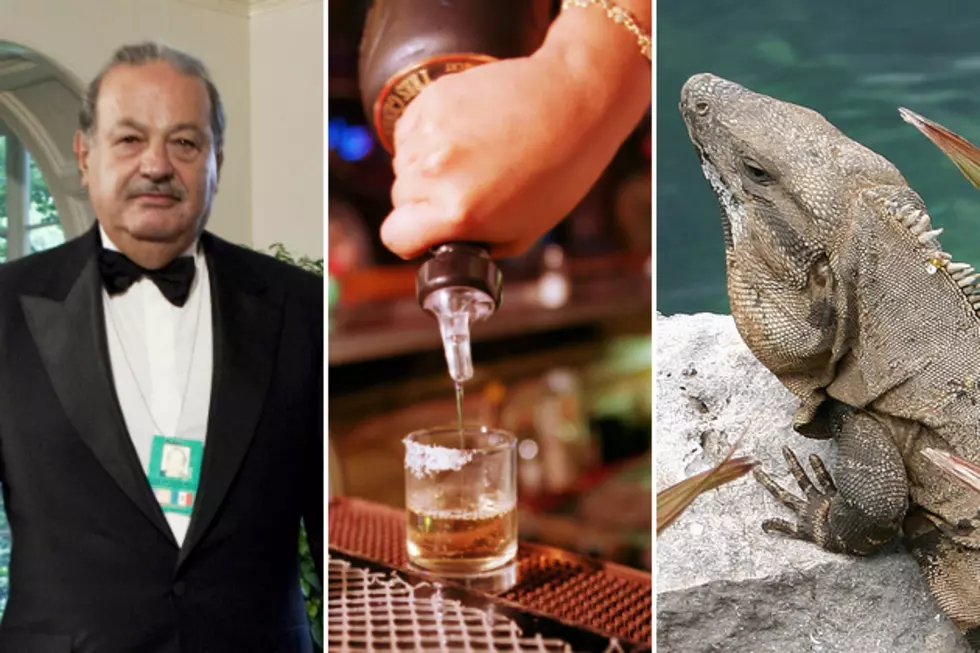
10 Surprisingly Fun Facts About Mexico to Help Get Ready for Cinco de Mayo
They’re our neighbor to the south. We share the second largest border between two countries. We enjoy their food and celebrate their culture every year on May 5. But, what do we really know about the officially named United Mexican States?
Sure, it’s a great place to vacation and they’ve shared some of the best parts of their culture with us. We know it’s a place full of history, beautiful landscapes and the most common struggles of man. But there’s a lot more to Mexico than all-inclusive spring breaks and Mayan ruins. Here are ten random things you probably didn’t know.
There Are A Lot of Official Languages
Most commonly, we think of Mexico as a Spanish-speaking nation, and with about 97 percent of the population being Spanish speakers, that’s a pretty safe assumption. But Spanish is not the official language of Mexico. It’s the de facto language, based on its wide-spread use, but the government of Mexico officially recognizes 69 languages. According to Mexican congressional law, the country’s 68 indigenous languages are all considered “official languages” of the country in order to preserve the nation’s rich heritage. In reality, six percent of Mexico’s population actually speaks one of those indigenous languages, the most common being the ancient Aztec language of Nahuatl, spoken by more than one million people. But, any citizen can request official documents in their chosen language, as long as it’s recognized as an indigenous language.
There Is a Lot of Biodiversity
We now know there are a lot of languages recognized in Mexico, but it turns out there are also a lot of species in Mexico. The country ranks in the top 20 of the world’s ‘megadiverse’ countries. As home to nearly 12 percent of the world’s biodiversity, Mexico is known as one of 20 countries containing the most species in the world. It has more than 200,000 different species living among its borders and actually leads the world in species of reptiles. There are more than 707 different kinds of reptiles crawling and slithering around Mexico. With 438 known species of mammals, it ranks second in the world in mammal diversity. There are also 290 different amphibian species and 26,000 different kinds of flora.
it Has the Oldest Tree
Of course, it’s no secret that there are ancient structures, ancient peoples, ancient languages and ancient traditions in Mexico, but what it also has is an ancient tree. Mexico is home to one of the oldest living trees in the world. El Arbol del Tule, the tree of Tule, has been around for roughly 1,600 years. With an estimated diameter of more than 30 feet, it has more girth than any other measured tree on the planet. It stands an impressive 116 feet tall. As its name indicates, it can be found in the city of Tule in the Mexican state of Oaxaca, on the grounds of a church. The tree is sacred to the indigenous tribes of the area and is a regular tourist attraction. Local schoolchildren give guided tours of the tree and show visitors the different animal shapes that can be found in the trunk.
The World’s Smallest Volcano Is There
Mexico is in a region known as the ‘Ring of Fire’ because of the large number of volcanoes there. But not all of these volcanoes are big. Mexico is actually home to the world’s smallest volcano. Located in the city of Puebla (where Cinco de Mayo originated), the Cuexcomate volcano is only 43 feet tall with a diameter of 75 feet. It was formed by an eruption of a much larger volcano in the year 1064. The Cuexcomate is considered to be inactive and visitors can even climb a spiral staircase into the tiny volcano.
It Has a Sinking City
Mexico City is, by population, one of the largest cities in the world. It’s the largest metropolitan area in the western hemisphere and the fifth largest city in the world. But even with a total metro population of 21.2 million people, it’s surprising that the city is actually sinking into the ground. Because the city was built on the saturated clay bed of Lake Texoco, which was drained in the 17th century, it actually sinks several inches every year. In order to provide water to the many citizens of the city, the underground water is pumped out from beneath the city, which has caused the city to sink a total of about 30 feet over the last century. After the loss of many irreplaceable historical structures, pumping has been limited to the outer edges of the city, so there are some places that only sink about an inch or two a year, while other suburban areas can sink a foot or more each year.
There is a Tequila Law
We all know we should thank Mexico for introducing us to tequila. It’s the national drink and has been distilled in the area since the 16th century. What may be news to you is that Mexico has a law to keep its tequila up to its high standards. Under this law, at least 51 percent of any tequila must come from the blue agave plant. Of course, this plant is native to the region around the town of Tequila, northwest of Guadalajara in the state of Jalisco, and the law states that that’s where the tequila must come from as well. Mexico also has an international claim on the word ‘tequila’ and will take legal action against manufacturers of distilled blue agave liquors in other countries.
Mexico Loves Coca-Cola
Not only do they love their tequila in Mexico, they also really like to drink Coca-Cola. Per capita, Mexico drinks more Coke than any other country. According to statistics from Coca-Cola’s 2010 annual report, an average of 675 eight-ounce bottles of the carbonated beverage are consumed per person each year, compared to about 411 bottles per person in the US. That means every resident of Mexico would have to be drinking them at a rate of two a day. Perhaps they like it so much there because the Coke is sweetened naturally with sugar instead of with high-fructose corn syrup, as it is in other places.
Mexico Gave Us the Caesar Salad
It’s common knowledge that Mexico introduced us to tequila, chocolate, chilis, chipotle and guacamole, but what you may not know is that Mexico also gave us the Caesar salad. Italian immigrant and restaurateur Caesar Cardini was operating restaurants in Tijuana in the ’20s, to avoid the restrictions of Prohibition. Legend has it that in July of 1924, a rush depleted the supplies in Cardini’s kitchen and he had to create a salad from what he had on hand. He even added an extra flair by hand tossing the salads himself at the tables. Even though Cardini lived in San Diego, the first known listing of a Caesar salad on a menu was in Los Angeles in 1946. Many former Cardini staff members claim to have invented the salad, but the name remains his.
The World’s Richest Man Lives There
If you were asked to come up with a list of the richest people in the world, you’d probably think of Warren Buffett and Bill Gates. Those two are right up there, but the world’s richest man is actually Carlos Slim Helu. This business mogul is worth an estimated $69 billion and calls Mexico home. He made himself wealthy in the business of telecom, but now his company has a hand in not only mobile phones, but also convenience stores, tobacco, tires and a 50 percent ownership in Hershey’s Mexican operations. He has recently turned his sights on more philanthropic interests and focuses his efforts on the Carlos Slim Foundation, the Telmex Foundation and a $70 million art museum with a collection of art valued at $700 million in Mexico City that is open to the public free of charge.
Cancun Was Created By the Government
The resort town we know and love as Cancun used to be nothing in the middle of nowhere. In 1970, there were three people living in Cancun. They were the caretakers of a coconut plantation owned by a man who lived on the island of Mujeres. It wasn’t exactly the hot tourist destination it is now. In fact, in 1974, because investors were reluctant to take a risk on an unknown, yet beautifully untouched, area of the country, the Mexican government funded the construction of the first nine hotels in Cancun. After the start of the focused tourism development program, Cancun went from a fishing town with virgin white sand beaches surrounded by untouched forests to one of the two most visited tourist destinations in the country, next to Acapulco. Unfortunately, this popularity has also brought with it struggles to provide services and to contain illegal squatting. It’s estimated that 10-15 percent of the mainland area on the fringes of the city is occupied by squatters and irregular developments.
More From WIBX 950









